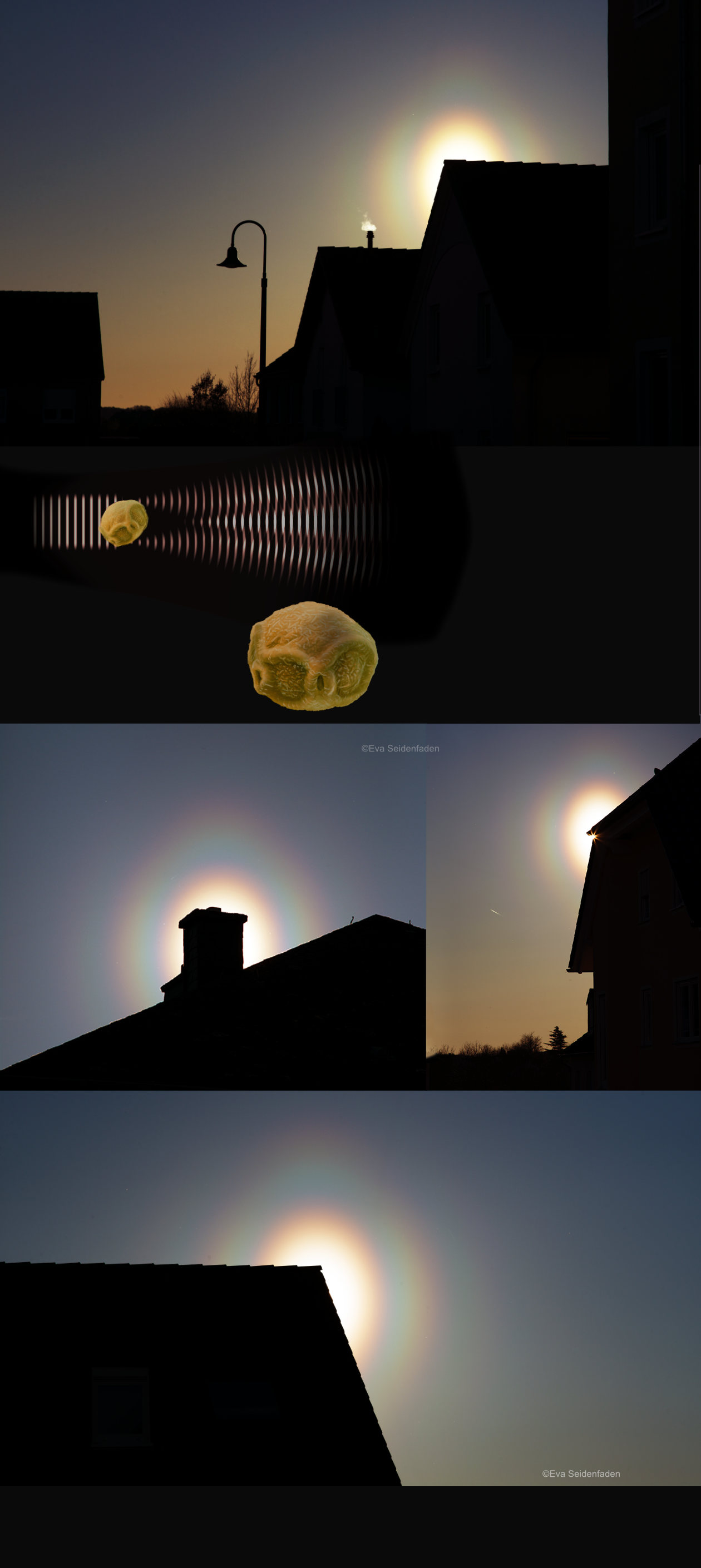Early Pollen Corona
toptics
A
Highlights
A characteristically oval and 'lumpy' pollen corona. The rings are particularly colourful and bright as in most pollen coronae.
Caught at Trier, Germany in late February by Eva Seidenfaden (Paraselene Optics site, Paraselene2 Photography).
Western Europe had been unusually warm. Pollen from alders was in huge concentrations.
All images © Eva Seidenfaden, shown with permission
Drag aligns the grains An alder pollen grain. Alder pollen has a flattened bun shape. The bun edges can be roughly pentagonal with pores at each pentagon edge.
Aerodynamic drag will make it tend to drift with its ring of pores aligned horizontal.. As seen by light from a low sun it will look horizontally elongated.
Horizontal elongated objects give vertically elongated coronae!
Diffraction The pollen grains scatter sunlight in all directions. We can think of each point on the surface radiating out spherical scattered waves.
The waves overlap and interfere. They produce brightness in some directions and darkness elsewhere. The concentration in the forward direction - seen around the sun - is a corona.
Spherical water drops give smooth circular coronae. Lumpy non spherical pollen grains give oval ones with bright patches here and there.
But was it really alder? Arm waving explanations are all very well but do they stand up to measurement? Was alder pollen really responsible?
The corona�s angular dimensions were calculated from Eva�s images and their EXIFs. Then they were compared with Mie scattering predictions. That revealed the approximate dimensions of the particles generating the corona.
They were 19 micron high and 26 micron wide. Alder pollen grains measured by electron microscopy are quoted as 20 micron high and 23-30 micron wide. Not bad agreement!


